Abstract
Consanguinity rates were analyzed in 904 families of retardates studied in 11 Israeli Jewish ethnic groups. It was estimated that the representative recessive gene frequency is .00518, implying that a gene equilibrium maintained by mutation alone is improbable and that some other hypothesis should be considered. The proportions of homozygotes among the following idiopathic subgroups are estimated as follows: 18%-19% homozygotes among severe idiopathic retardates with nonconsanguineous parents and no affected siblings; 74%-76% homozygotes among severe idiopathic retardates with first-cousin parents and no affected siblings; 5% homozygotes among mild idiopathic and idiopathic-familial retardates with nonconsanguineous parents; and 41% homozygotes among mild idiopathic and idiopathic-familial retardates with first-cousin parents. The estimated number of major gene loci within ethnic groups is 17-21 for severe idiopathic retardation and 43-61 for mild idiopathic retardation. These findings provide a basis for genetic counseling of families with single retardates of unknown cause. They can also be useful in epidemiologic studies of nongenetic factors. The great prevalence of common gene defects causing retardation, coupled with the rarity of disorders of amino acid metabolism in the same series, seem to indicate that further emphasis on amino acid metabolism may be nonproductive in the scientific study of retardation and that other biochemical approaches should be encouraged.
Full text
PDF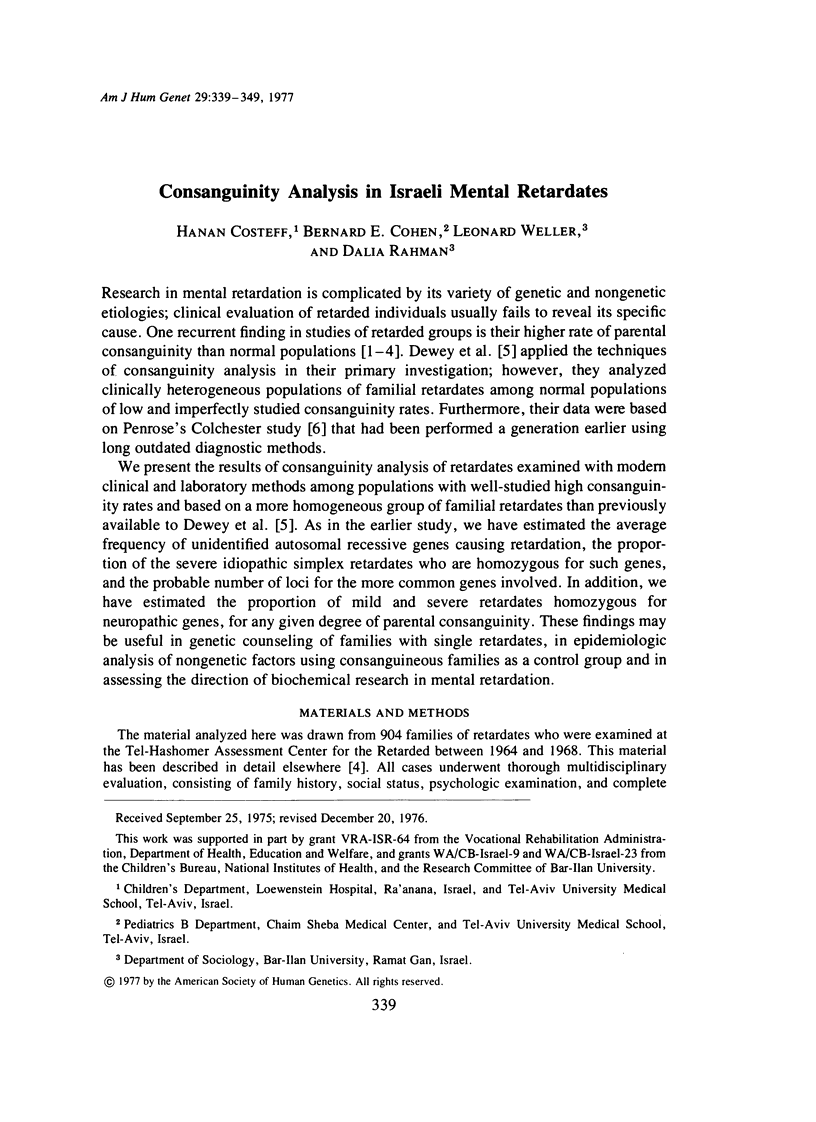
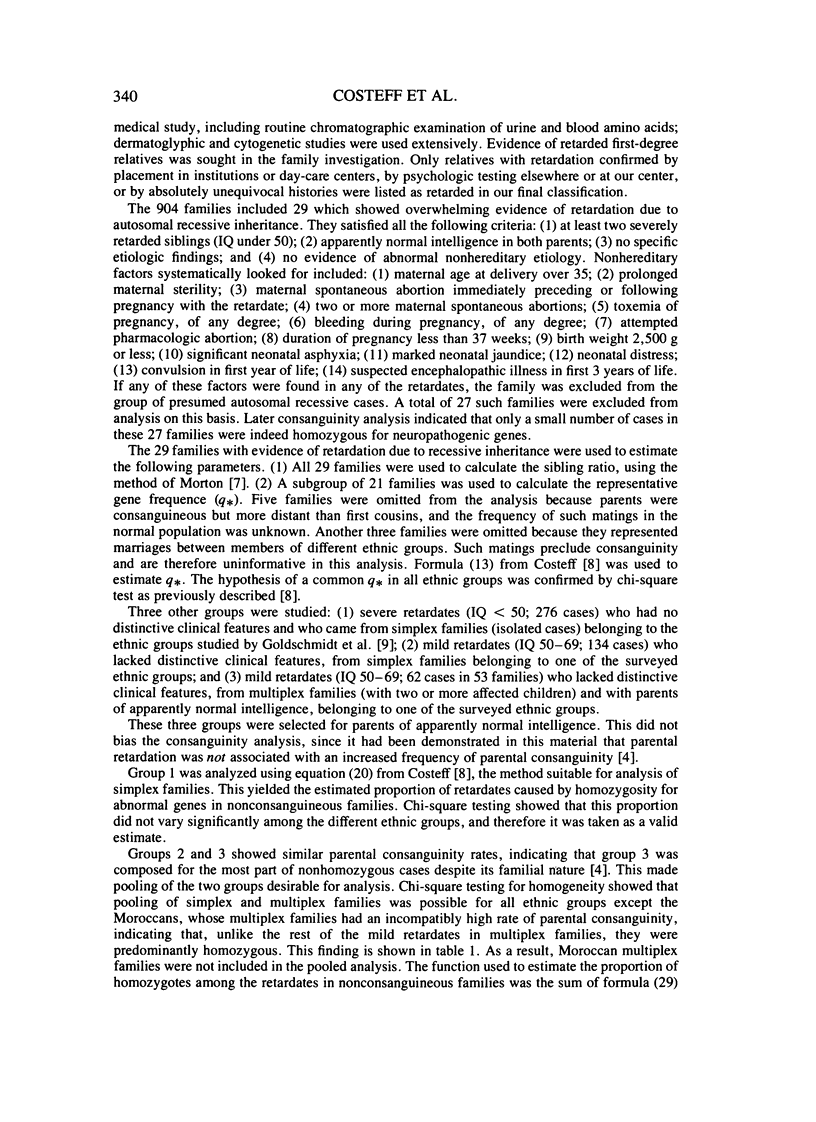
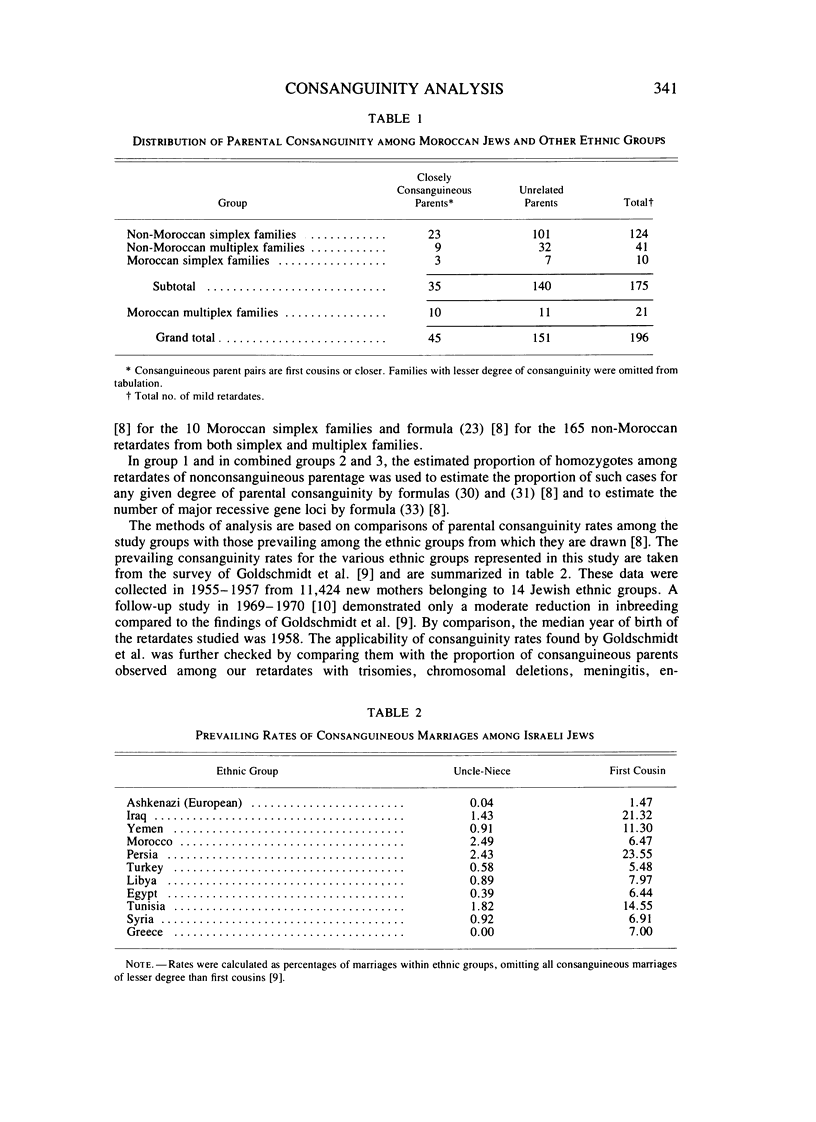
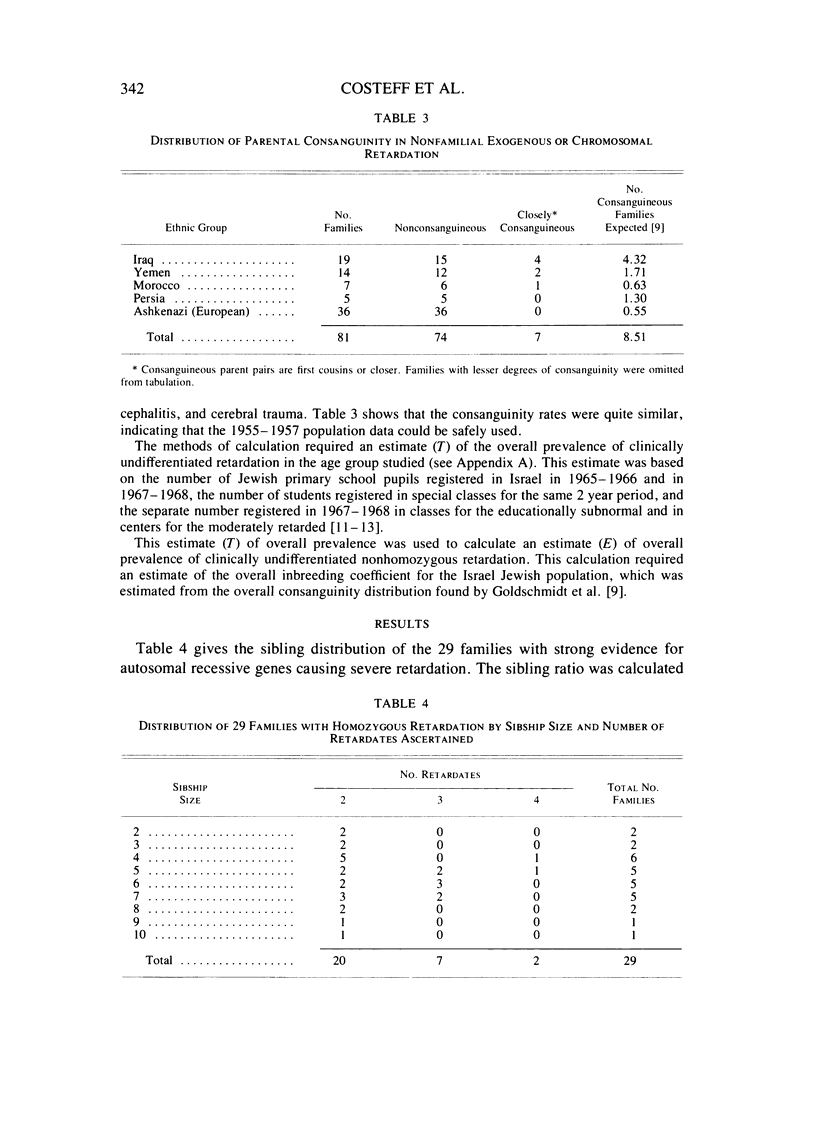
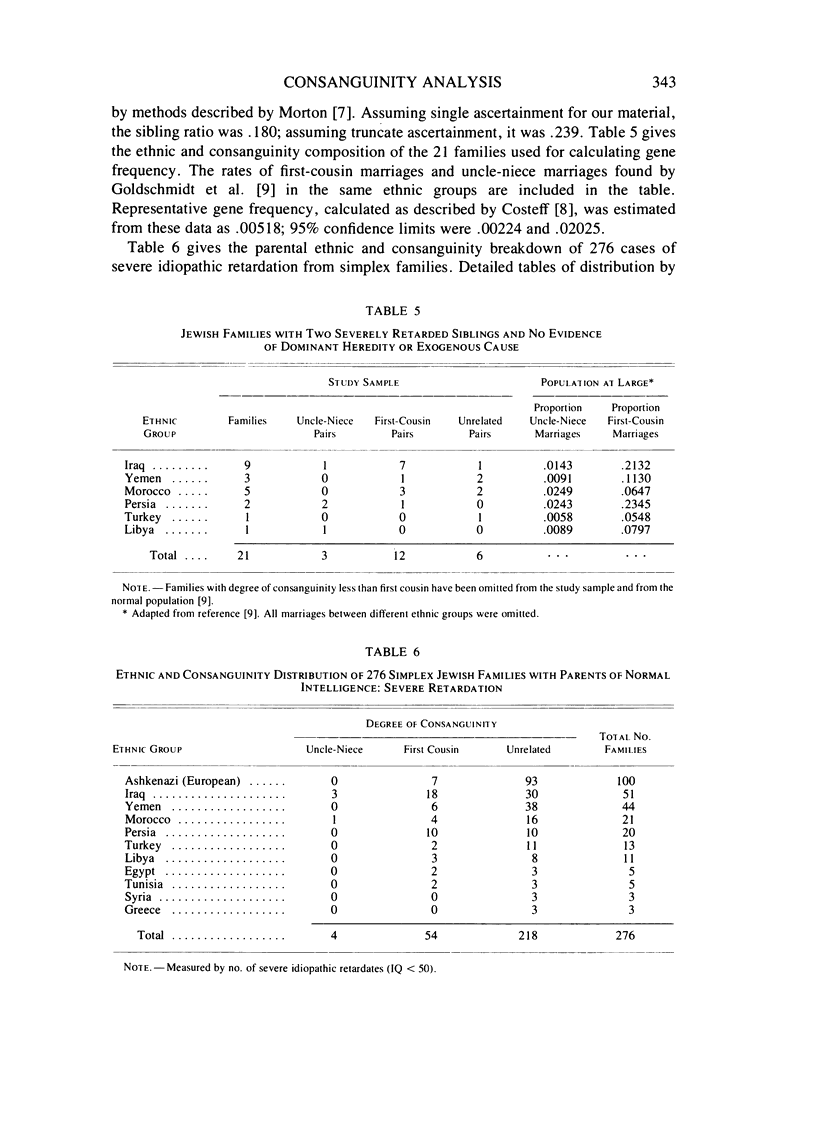
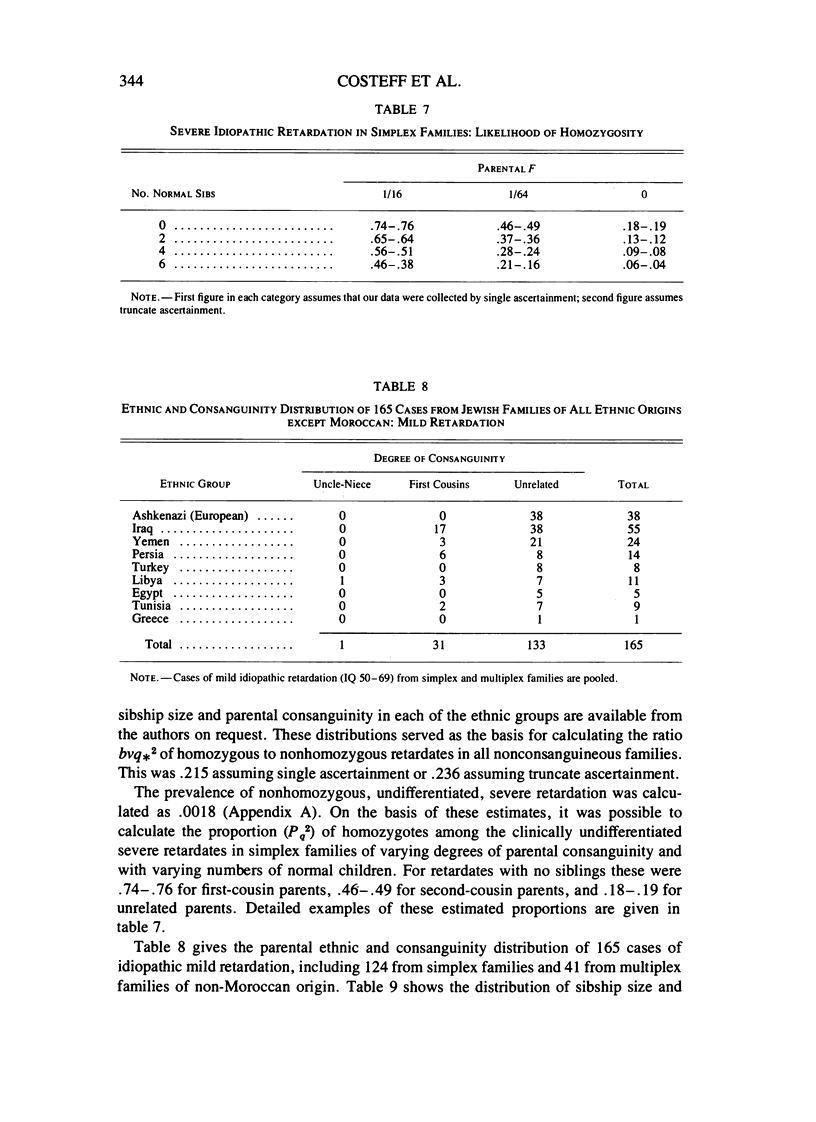
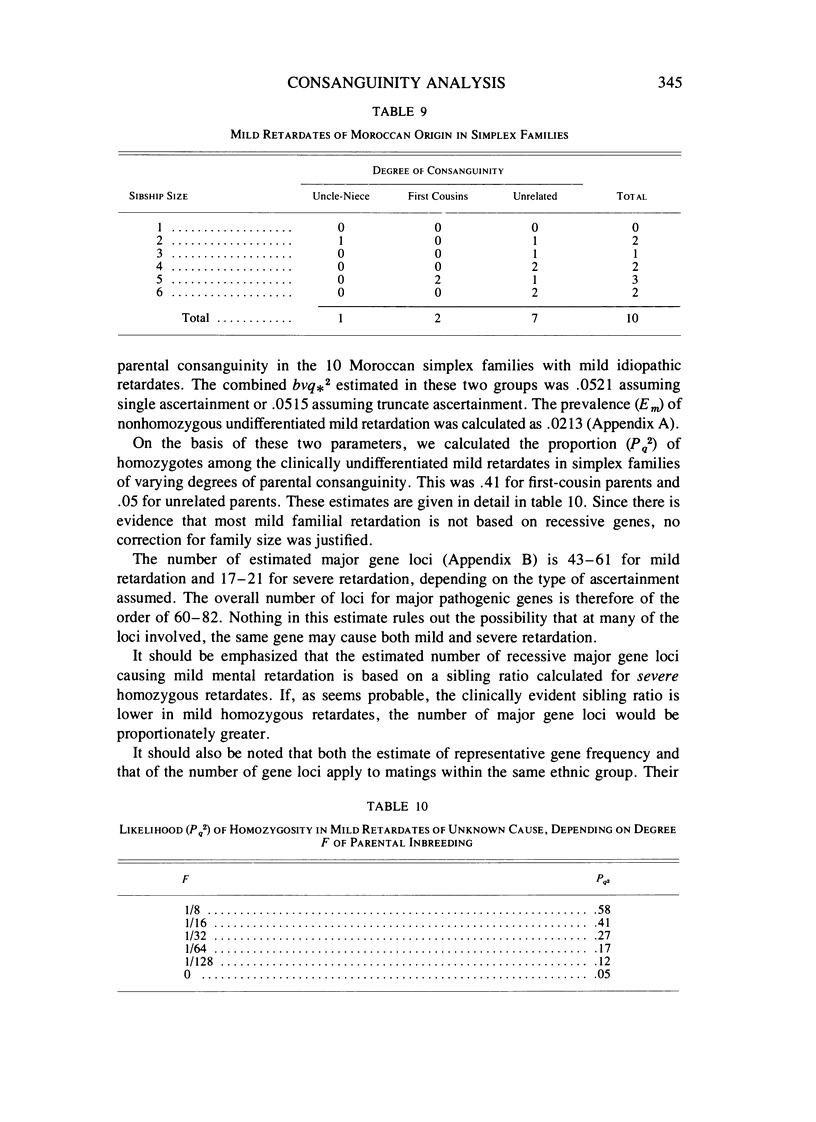
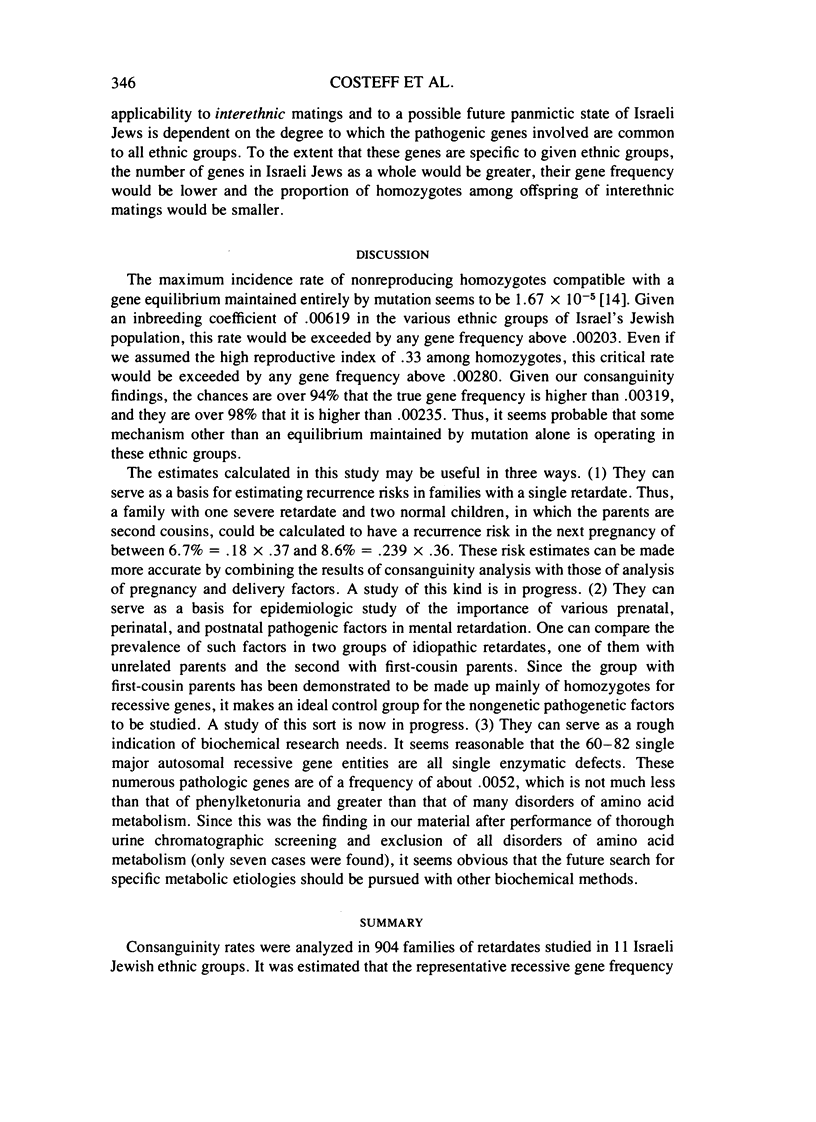
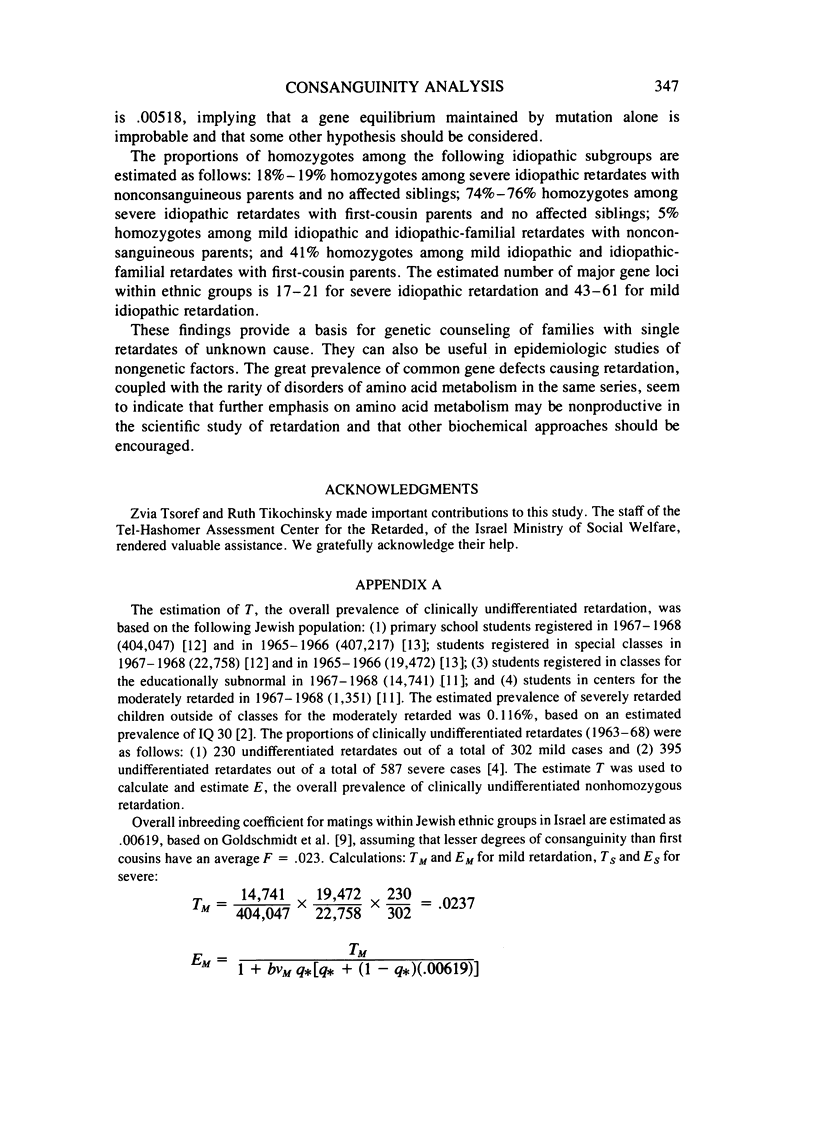
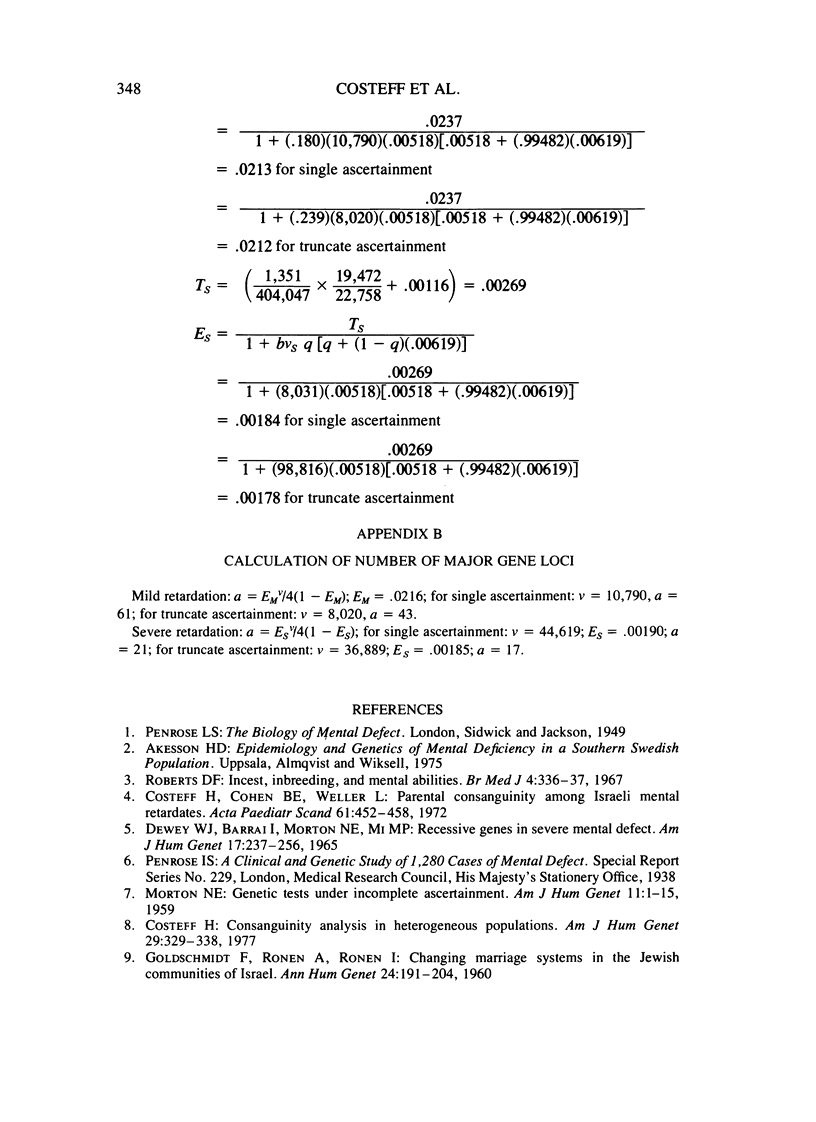
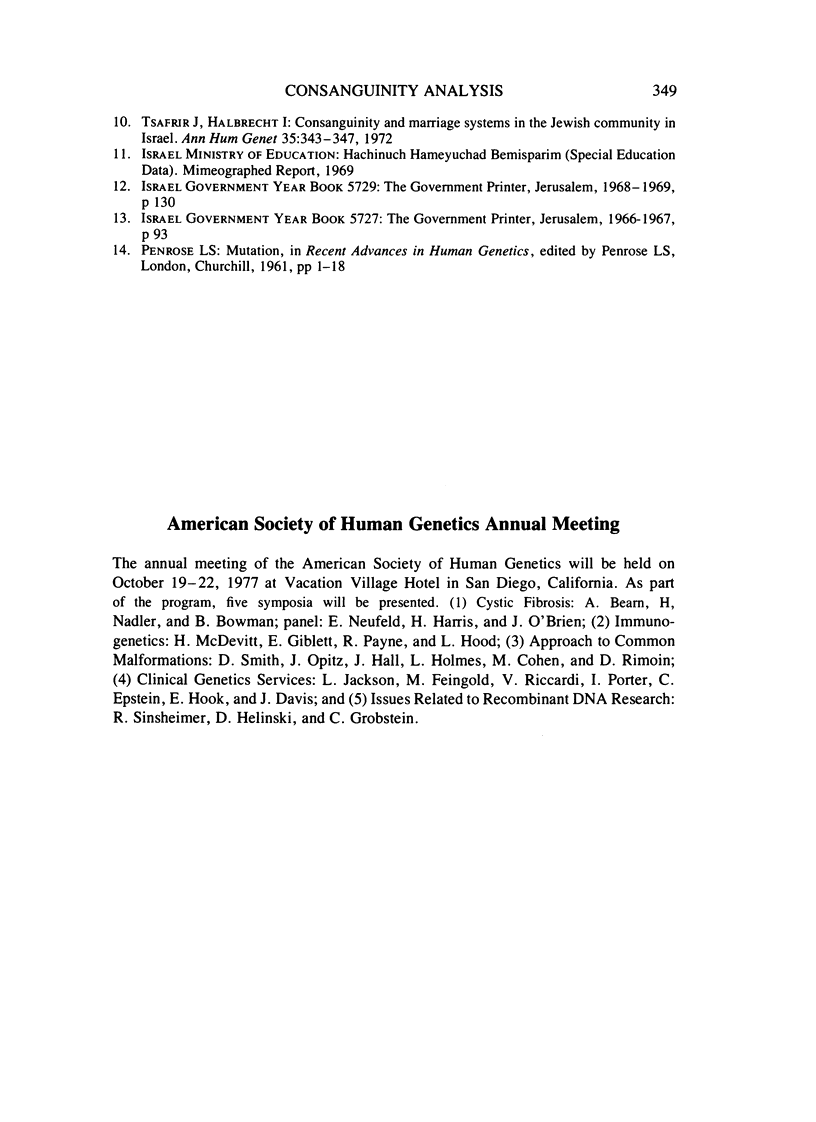
Selected References
These references are in PubMed. This may not be the complete list of references from this article.
- Costeff H., Cohen B. E., Weller L. Parental consanguinity among Israeli mental retardates. Acta Paediatr Scand. 1972 Jul;61(4):452–458. doi: 10.1111/j.1651-2227.1972.tb15863.x. [DOI] [PubMed] [Google Scholar]
- Costeff H. Consanguinity analysis in heterogeneous populations. Am J Hum Genet. 1977 Jul;29(4):329–338. [PMC free article] [PubMed] [Google Scholar]
- DEWEY W. J., BARRAI I., MORTON N. E., MI M. P. RECESSIVE GENES IN SEVERE MENTAL DEFECT. Am J Hum Genet. 1965 May;17:237–256. [PMC free article] [PubMed] [Google Scholar]
- GOLDSCHMIDT E., RONEN A., RONEN I. Changing marriage systems in the Jewish communities of Israel. Ann Hum Genet. 1960 Jul;24:191–204. doi: 10.1111/j.1469-1809.1960.tb01732.x. [DOI] [PubMed] [Google Scholar]
- MORTON N. E. Genetic tests under incomplete ascertainment. Am J Hum Genet. 1959 Mar;11(1):1–16. [PMC free article] [PubMed] [Google Scholar]
- Roberts D. F. Incest, inbreeding and mental abilities. Br Med J. 1967 Nov 11;4(5575):336–337. doi: 10.1136/bmj.4.5575.336. [DOI] [PMC free article] [PubMed] [Google Scholar]
- Tsafrir J., Halbrecht I. Consanguinity and marriage systems in the Jewish community in Israel. Ann Hum Genet. 1972 Mar;35(3):343–347. doi: 10.1111/j.1469-1809.1957.tb01408.x. [DOI] [PubMed] [Google Scholar]


